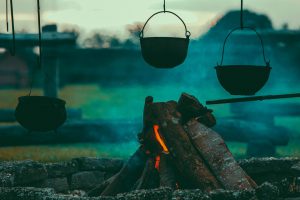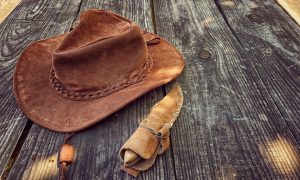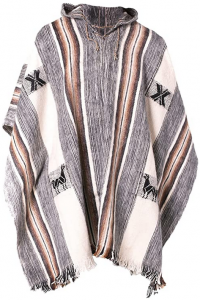 I have wondered for a long time what it was like to be a cowboy in the Old West. Not today’s cowboy, but the 19th century cowboy like my Great Grandfather who was a lawman in the Sierras, riding horseback and carrying only what fit on his horse. He was a California Fish and Game warden who rode from Paradise California to Lake Tahoe and back in a regular circuit for his early career. He had full law enforcement powers and even had gun fights with criminals who he was tasked to deal with. He was a real cowboy.
I have wondered for a long time what it was like to be a cowboy in the Old West. Not today’s cowboy, but the 19th century cowboy like my Great Grandfather who was a lawman in the Sierras, riding horseback and carrying only what fit on his horse. He was a California Fish and Game warden who rode from Paradise California to Lake Tahoe and back in a regular circuit for his early career. He had full law enforcement powers and even had gun fights with criminals who he was tasked to deal with. He was a real cowboy.
It occurs to me as I am setting up my Survival Lab that I can recreate part of his kit with what I have on hand and a little determination to test it out in a controlled setting at the Survival Lab and then out in the bush later on in 2022.
Lucky for me, I ran into this article called “Cowboy EDC: 16 Things Cowboys Carried With Them To Survive In The Wild West” that detailed the following 16 items that were EDC for the typical 19th and early 20th century cowboy:
-
 Knife
Knife - Firearm
- Bedroll
- Food
- Canteen
- Cookware
- Bandana
- Rope
- Blanket
- Rain Slicker (Poncho)
- Tinder Box (Fire kit)
- Tobacco
- War Bag (Possible bag)
- Gloves
- Piggin Strings
- Fishing Line and Kit
I have slightly altered the list to amend things that would have been assumed to be added to the kit or used terms people would recognize over the older terms being used in the original list.
 In going over this list, much of this I have already, but as the article is clear to point out, there are differences. For example, the knives available at the time were not the advanced materials we now have.
In going over this list, much of this I have already, but as the article is clear to point out, there are differences. For example, the knives available at the time were not the advanced materials we now have.
People often carried a simple butcher knife and didn’t have the flexibility our modern knives have. I will use a kitchen knife in my recreation of Grandpa’s kit to be authentic. The firearm is not going to be in my kit for the recreation, but I will give it a nod and give thanks for our second amendment rights to own one.
The sleeping system they had back then was a simple bed roll. I have acquired a wool blanket that is a close approximation of what was available and will use this in my re-creation. I suspect that item 9, the blanket will also be rolled in with the sleep system as an optional sleep accessory but which also could be used to do other tasks like warm me by the fire or as a rolled up pillow.

Shemagh – Can be used as a bandanna, face cover, strainer, towel and much more.
The food, canteen and cookware will be less easy to match to 19th century tech, but I will use trail foods Grandpa would have used and keep the canteen and cookware as simple as I can. The gloves are easy since I already have plenty of leather outdoor work gloves.
The Bandanna is simple as I have a lot of these, but I may cheat and use my shemagh instead. They are larger and serve much the same purpose. The rope will likely be a tool my Grandfather would have used a lot of. These were made from hemp or cotton. I’ll likely get a cotton rope to round out my kit.
 We covered the use of ponchos in my prior article but I will be using my Alpaca wool poncho in combination with a plastic poncho that would be a rough analog of Grandpas duster coat he wore on the trail.
We covered the use of ponchos in my prior article but I will be using my Alpaca wool poncho in combination with a plastic poncho that would be a rough analog of Grandpas duster coat he wore on the trail.
The South American Poncho likely saw a lot of use in California given the popularity it had in the Civil War for keeping troops dry and warm. It would naturally find use with law enforcement and likely each officer wore some kind of waterproof kit when out on patrol on horseback.
The tinder box (fire kit) was essential for making fire in the field. I would be Grandpa had not only matches but likely had flint and steel to create fire the old fashioned way on char cloth. I have these items and will be using them in my recreation.
 The tobacco is of course, like the firearm, one of those trigger words for people, but tobacco had more uses than just to smoke with. Tobacco had medicinal purposes too. One of our old family recipes was to put tobacco on bee stings when they happened. We kept chewing tobacco on hand for this but a cigarette would do in a pinch. You just moistened the tobacco with water and slapped it on the sting and put a bandage over it. The pain would leave the sting in seconds.
The tobacco is of course, like the firearm, one of those trigger words for people, but tobacco had more uses than just to smoke with. Tobacco had medicinal purposes too. One of our old family recipes was to put tobacco on bee stings when they happened. We kept chewing tobacco on hand for this but a cigarette would do in a pinch. You just moistened the tobacco with water and slapped it on the sting and put a bandage over it. The pain would leave the sting in seconds.
The fishing kit is a no brainer and a hand line with some split shot and hooks plus a little bit of bait is all I need, but this is optional for my recreation. We shall see how it goes for me to use it.
Then, there is the subject of “Piggin Strings”. I think I could characterize these as the paracord of the 1800s. I had never heard of them until recently. For my purposes, I’ll use bank line instead since it serves much the same purpose. See the video below to learn more.
War Bag (Possibles Bag)
This is my cheat bag. I’ll likely use things like candles for lighting and any other items that can fit into my bag that would have been something you had in the 19th century that would have been “nice to have” items. I’ll allow myself a few 21st century items just because I can but will be keeping them to the minimum.
Shelter
The only thing missing from the list? Shelter!
I have NO idea what Grandpa used for shelter, so my educated guess is he used an oilcloth tarp. As I have one that I am ready to make, I will attempt to use it, but otherwise will use a stock 6×9 plastic tarp if the oilcloth tarp isn’t ready. My bet is that he had regular campsites he frequented and likely tried to stay at towns if he could, but I am certain there were those days on the trail he couldn’t make it to town and had to camp in the woods.
My other bet is that he probably used the tarp in a plow-share configuration and probably made heat reflectors with logs or next to big rocks to keep warm. I’m sure this was something he did relatively often and will make the most of what is available to me to duplicate what he did.
When will I do this?
Likely very soon and during a point when the weather is dry. Sometime in late 2021 or early 2022. All in all, a doable kit and I will be doing a video soon of this kit in action!
